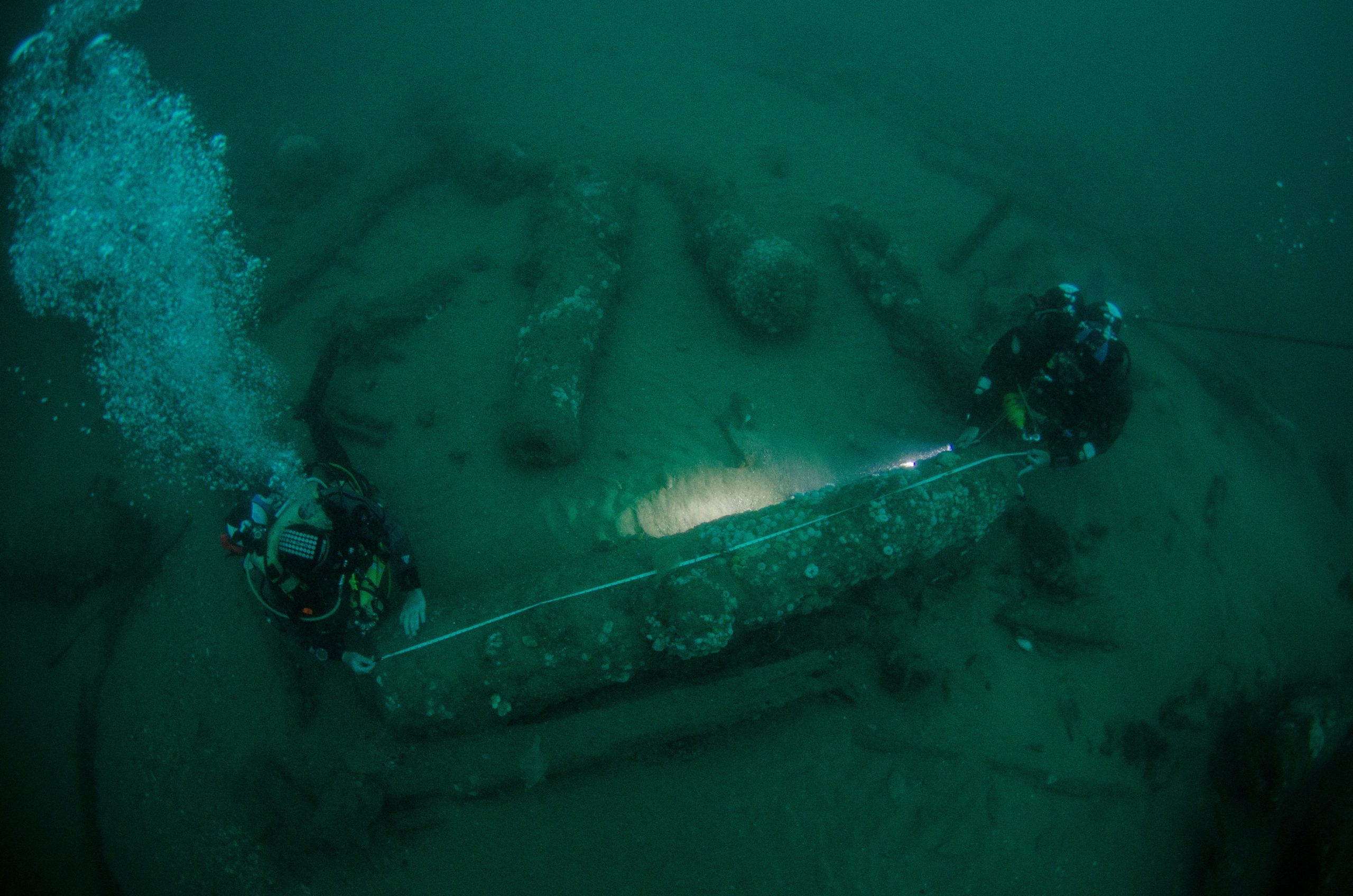
Bethany Roberts, FISM News
[elfsight_social_share_buttons id=”1″]
The U.S. Navy confirmed the location of the U.S.S. Samuel B. Roberts (DE 413) on June 25, 2022. It was lost seventy-eight years ago during World War II and has become the deepest shipwreck ever located and surveyed.
Resting at 6,895 meters (about 4.3 miles), the ship is named after Coxswain Samuel Booker Roberts, Jr., who died during the Battle of Guadalcanal in 1942, according to the Navy. Retired naval officer and underwater explorer Victor Vescovo announced on Twitter he and a team from Caladan Oceanic found the destroyer escort ship in the Philippine Sea.
Vescovo, along with sonar specialist Jeremie Morizet, piloted the submersible “Limiting Factor” to the wreck of the ‘Sammy B.’ The team found the ship in its entirety, though it was broken into two pieces separated by about 10 meters. This same team also discovered the U.S.S. Johnston last year, which, at over 21,000 feet, was the deepest wreck discovered at that time.
The historical records of where the wreck was located were not very accurate. Vescovo and his team located the wreck through exhaustive historical research led by Caladan Oceanic affiliate LCDR Parks Stephenson, as well as the use of groundbreaking technology.
The search involved the use of a “first-of-its-kind ocean depth (11,000) capable, submersible-mounted side-scan sonar system built for Caladan by Deep Ocean Search (of France).” According to EYOS Expeditions, “All of the data relating to the dive, including sonar maps, video, and photographs, will be donated to the US Navy and its Heritage and History Command.”
The discovery of the Sammy B has led to the reminiscing of the mission that earned the ship the title “the destroyer escort that fought like a battleship.” The ship is a John C. Butler-class destroyer and was commissioned in 1944, according to Smithsonian Magazine. Later that year, Japanese forces sunk the ship during the Battle of Samar.
The ship’s namesake, Coxswain Roberts, was a true hero. He was part of a mission to rescue a company that had been surrounded by the Japanese Center Force. Instead of retreating, Roberts steered his boat directly into the enemy’s fire as cover for the rescue mission.
EYOS Expeditions wrote in a Facebook post that the ship “successfully defended against the vastly superior Japanese Center Force, consisting of four battleships, six heavy cruisers, two light cruisers and 11 destroyers—including the largest and most heavily armed battleship ever constructed, the Yamato.”
According to the post, the ferocity of the ship’s attack delayed the forces for so long that the Japanese commander, Admiral Kurita, eventually broke off the action and retreated toward his home base. The U.S.S. Samuel B. Roberts’ attack earned it the Navy Cross.
The depth where the Sammy B’s wreckage was found is extreme. Resting at almost 23,000 feet, the ship is in deeper water than 98 percent of the world’s oceans, according to BBC News.
“At that depth, there’s so little oxygen that you don’t get near as much biological growth on the wrecks,” Vescovo told BBC News. “So they can appear very much like they did when they were fighting back in 1944.”
The wreck site is considered a Department of the Navy sunken military craft and protected from unauthorized disturbance by the Sunken Military Craft Act (SMCA).
“Violations of the SMCA can carry penalties of up to $100,000 a day, confiscation of the vessel used to disturb the sunken military craft, and liability for damages caused,” the Navy wrote in a statement. “Permission to disturb U.S. Navy sunken military craft for archaeological, historical, or educational purposes is sought from the Naval History and Heritage Command. There are no plans to disturb USS Samuel B. Roberts (DE 413).”
Fittingly, the wreck of the U.S.S. Samuel B. Roberts (DE413) was found on Destroyer Escort Day, according to naval historian LCDR Parks Stephenson.
